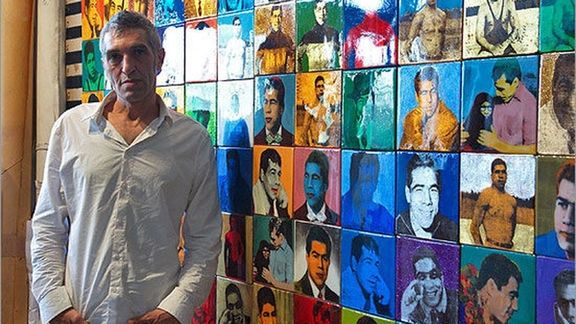Famous Iranian Artist Dies As Bootleg Alcohol Poisonings Increase

Painter Khosrow Hassanzadeh has died of alcohol poisoning in hospital in Tehran Sunday.

Painter Khosrow Hassanzadeh has died of alcohol poisoning in hospital in Tehran Sunday.
His tragic death is the latest in a rising tide which has claimed dozens of lives.
Hassanzadeh fell into a coma over ten days ago after having a drink apparently contaminated with poisonous methanol.
Many on social media blame the regime for Hassanzadeh and other victims’ deaths, criminalizing alcohol only driving the production into the hands of unregulated crime gangs and untrained home brews.
Since 1979, it has since caused death, blindness, and other serious injuries to hundreds from alcohol poisoning in various areas of the country every year.
According to a survey by Iran Open Data, half of all adults regularly consume alcohol despite the Islamic regime’s ban, homemade alcohol a common way to skirt the bans. In 2018, a report by the World Health Organization (WHO) ranked Iran ninth among 189 countries for alcohol consumption per capita.
The recent wave, however, appears to be much more widespread and has drawn sinister suspicions of state involvement. In Rebat Karim, a working-class town in the south of Tehran, over 40 people have been poisoned in the past month alone, six of whom died.

This has led to allegations that like mass schoolgirl poisonings that started in late November and spread throughout the country until the end of April, the regime itself or religious extremists protected by the regime may be involved in the poisonings.
Police Chief Ahmadreza Radan on Sunday strongly denied suspicions that the recent alcohol poisonings could have been deliberate.
Hassanzadeh was born in 1963 to a working-class Azerbaijani family who ran a fruit-selling shop in the south of the capital Tehran.
![One of Hassanzadeh’s latest collections exhibited in Tehran in 2018 was titled “[Andy] Warhol Saved Me”.](https://i.iranintl.com/images/rdk9umy0/production/97dbf6f79369b73b8a2ed158576ae13cd73c545e-902x606.jpg?rect=0,3,902,601&w=576&h=384&q=80&fit=max&auto=format)
He served as a conscript in the Iran-Iraq War (1980-1988) the experiences of which were later inspired many of his early works as did his observation of the Iranian society and its many complexities.
For years, he worked at his family’s shop while also studying art and Persian literature.
Hassanzadeh’s later works in which he used creative combinations of silk screen printing and ceramics are often characterized as ‘pop art’ and often deal with the everyday life of Iranians and sociological issues such as war, women, celebrities, traditional culture, heroes, family as well as the relation between the Iranian society and the West.
“My pictures are often to do with how east and west see one another,” Hassanzadeh told the Guardian on the phone from Tehran in May 2021.
His series of mixed-media works entitled ‘Prostitutes’ served as a commentary on the Iranian society and paid tribute to the 16 prostitutes killed by a serial killer in the religious city of Mashhad between 2000-2001.
The artists’ works were featured in solo and group exhibitions in Iran and many countries including Britain, Lebanon, the Netherlands, and the United Arab Emirates. Some of these are currently held by British Museum, Los Angeles Museum of Fine Arts, Huston Museum of Fine Arts, Agha Khan Museum in Toronto and Tehran’s Museum of Contemporary Arts.